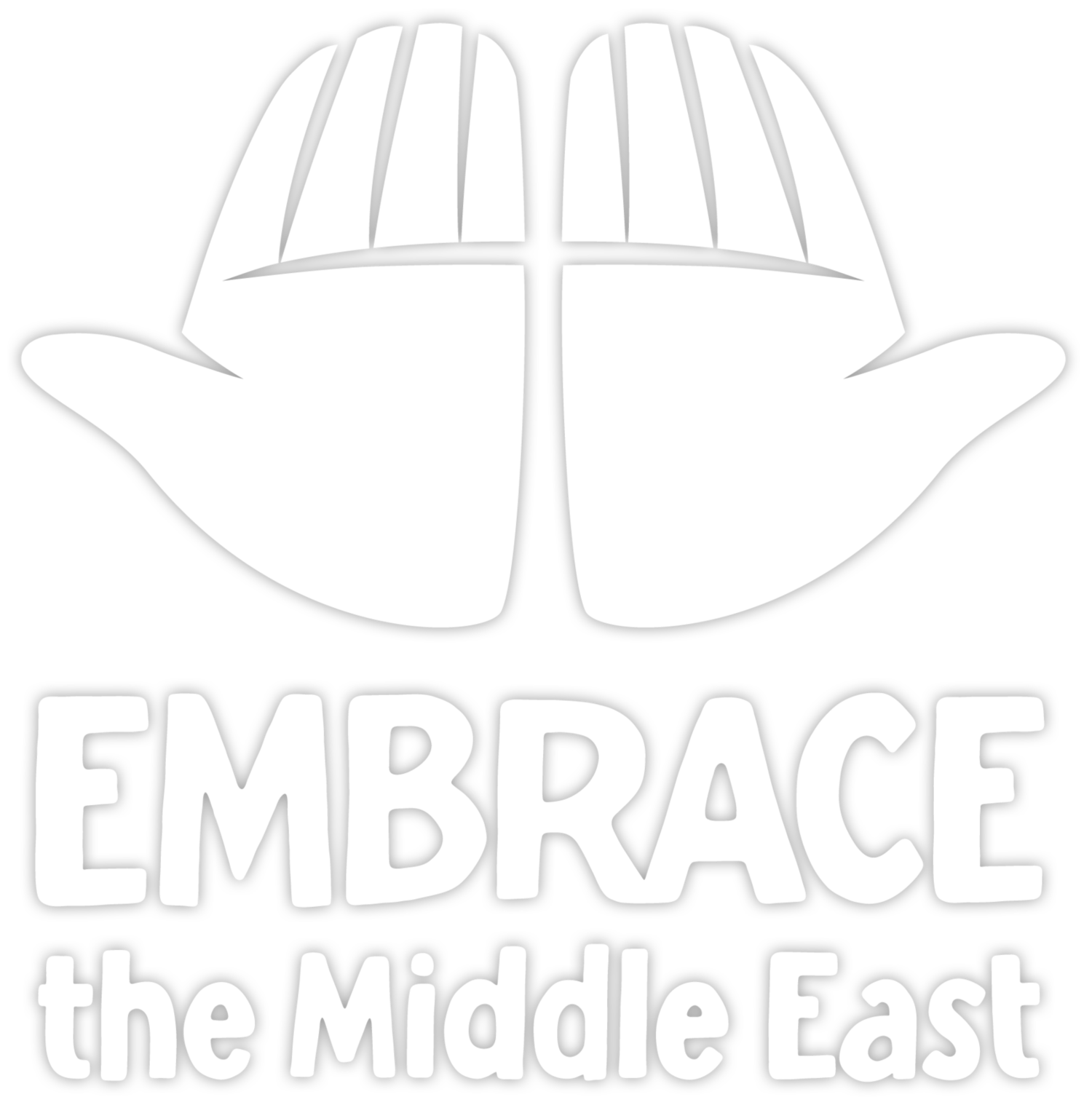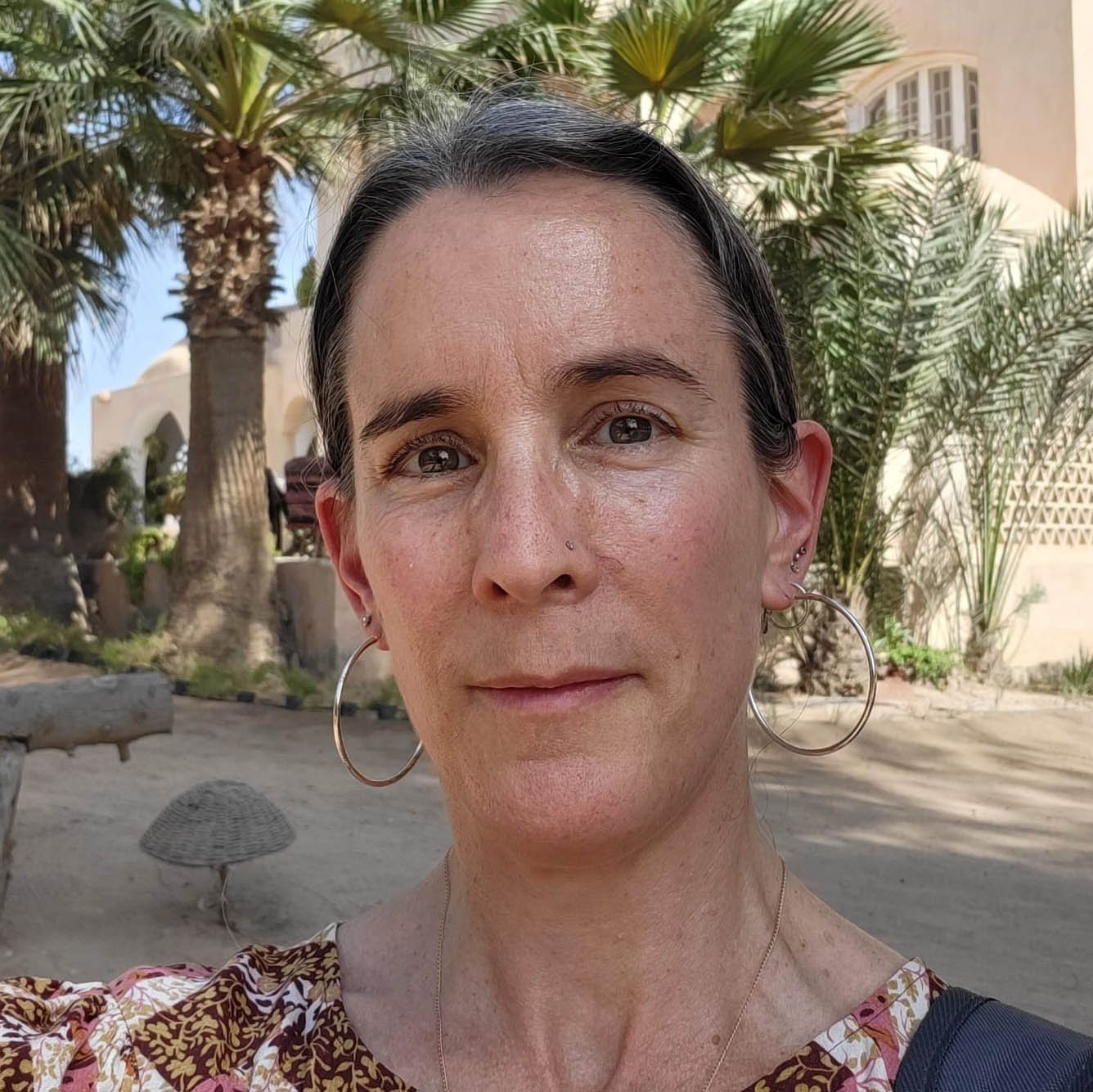My trip to the West Bank: Witnessing Life Under Occupation
May 2025
By Dr Ruth Valerio, Programmes, Partnerships & Advocacy Director at Embrace the Middle East
Dr Ruth Valerio
Do you know where Bethlehem is? Or Jericho or Hebron? They are names so familiar to us from the Bible that they almost sound mythical and it can be a surprise to remember that they are real places today. Even more surprising can be the realisation that they are all in the West Bank – a place we hear about on the news.
I have recently returned from the West Bank, as well as Israel and Jordan, meeting some of Embrace’s partners, hearing from them and seeing their work. I have to say, it’s been a challenging and sobering time.
A shattered economy
My first day there, arriving on the bus from Jerusalem with Embrace CEO Jamie Eyre, takes us to Checkpoint 300, where we are dropped off on the West Bank side.
Permit scanners. These check-in devices have to be used by Palestinians if they have travelled outside the West Bank so the Israeli authorities can keep track of their movements.
We walk past the little machines on the wall that Palestinians use when they return to the West Bank from Jerusalem. They have to apply for a special permit to travel outside the West Bank and then check back in when they return so the Israeli authorities can keep track of their movements.
We walk along a covered concrete corridor, through a turnstile and out into the bright sunshine of Beit Jala in the Bethlehem governorate, the separation wall that partitions the West Bank from Israel stretching away from us to our right. There we are bombarded by yellow taxis and drivers trying to get our business. Since the start of the war in October ’23, tourism has collapsed, destroying the economy and meaning many families are now struggling to survive and meet their daily needs, not able to afford to pay for education or healthcare. The other big segment of the Palestinian economy – jobs in Israel – vanished overnight when Israel revoked all Palestinian labour permits following the 7 October attack. (Now, workers from Thailand have replaced the Palestinians, and on a Saturday when things close for Shabbat, central Jerusalem is full of the three-wheeled bikes they use, as they get together to enjoy their day off.)
The Separation Barrier, that separates the West Bank from Israel.
It is heart-wrenching when we go to Bethlehem and wander around Manger Square and the Church of the Holy Nativity. It is almost totally deserted. We walk along a street full of closed tourist shops and tour guides beg us to let them show us round, telling us how much they need the money, that they can’t feed their families anymore.
A changing landscape
Over the next few days, as we drive around the area, we notice the massive road-building programme that Israel is undertaking. Jamie, who has been here before, can hardly believe how much is changing – and how quickly. The roads are being built to enable settlers to come and build their housing estates – large blocks of houses you see dotted around the hillsides.
Settler communities are growing alarmingly. They take land that has been in Palestinian families for generations, often violently but rarely facing the consequences. International law is clear: the settlers are there illegally, and yet no one in the international community is doing anything to try to prevent it.
Newly built, illegal settlements in the West Bank.
I ask one of our partners how to tell the difference between Palestinian and settler homes. Water is the answer. Palestinian homes have huge water containers on their roofs as water supply is intermittent and they need to collect as much as they can, when they can. Israeli settlers are allowed to build houses with their own water supply so don’t need anything on their roofs. Because of this, settler areas are green and lush; Palestinian areas dry and brown.
The roads being built will be for the use of settlers. The Israeli authorities are also building roads that will go around or under settler communities which will be for the use of Palestinians, thus keeping them apart.
Checkpoint and movement restrictions
Not being able to travel freely has become a huge issue for Palestinians in the West Bank and a story of daily frustration. There are now around 850 Israeli ‘movement obstacles’ in the West Bank, a third of which are road gates which are frequently closed. The Israeli authorities use these gates to close a road whenever they want, with no warning, and residents now are part of online communities where people provide constant narratives on when a road closes. A journey you thought was going to take 20 minutes suddenly takes 90.
One partner told us driving from Jenin to Nablus – a distance of just 22 miles – took them five hours because of road closures and long queues at checkpoints. You could feel the frustration in every conversation we had. It was impossible to ignore.
Settler road near Bethlehem.
Pressing on – despite harassment
One day, as we go back to Jerusalem across the checkpoint, going through the usual procedure of passport checking before being allowed back on the bus, we see two young Palestinian men pulled out of the queue. I can see where they get taken and I watch as they are made to stand against a wall, with their arms and legs spread against the wall and their faces pressing into it. They are searched, as are the contents of their bags which are tipped onto the ground. When the young men get back onto the bus, their clothes are dirty, and they wearily dust themselves off before settling back into the rest of their day. We see similarly in Jerusalem too – young Palestinian men randomly pulled aside on the streets by the police and searched.
‘Apartheid’ is a controversial word with a specific technical meaning, and one to be used with care. But as I hear about and see the systematic and structural segregation, and the harassment and debasement metered out on the Palestinian people, I struggle to find an appropriate alternative.
It is in this context that Embrace’s partners continue their amazing work: providing healthcare; education for children with disabilities; giving psychosocial support to young people traumatised by the political violence they experience; working with olive farmers who face aggression from settlers when they go into their fields to work their land; training young Christians with leadership potential; and giving legal advice to Palestinians facing discrimination.
Resistance, resilience and solidarity
Each person we spend time with, drinking coffee and eating falafel, tells us of the psychological toll it takes to keep going in a system deliberately set up to grind you down. We don’t hear anything good said about the Palestinian Authority either. And running through it all is the constant trauma of watching the death and ruthless destruction of their people in Gaza. But in the midst of it all, the work itself is a source of hope: a beacon of light in the darkness. It’s a sign of resistance too, of resilience and a determination not to give in.
Our partners tell us how much our visit means to them. The word ‘solidarity’ is used over and over again, and one person tells us, ‘You have been a powerful source of strength and comfort – more than words can truly express’. Standing with our partners as Embrace the Middle East, through our giving and our prayers, is something we can all do.
Share this blog with your friends







